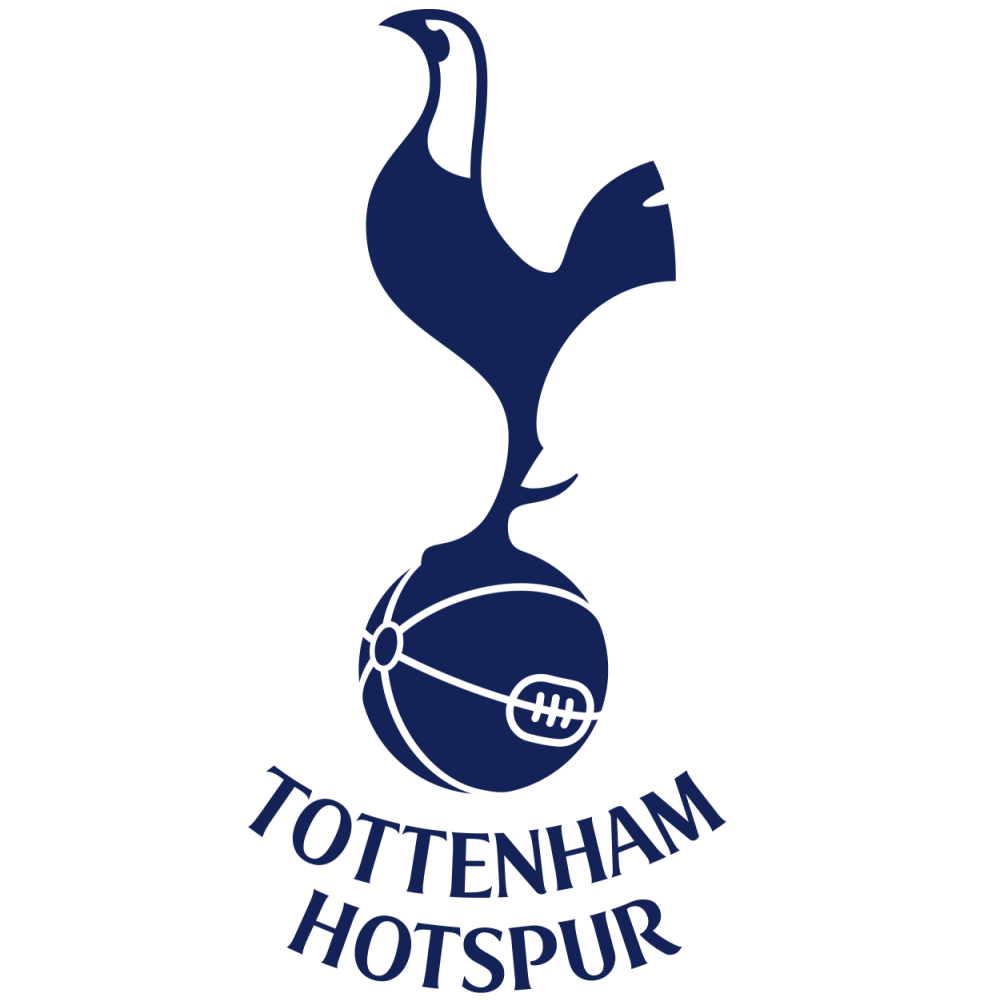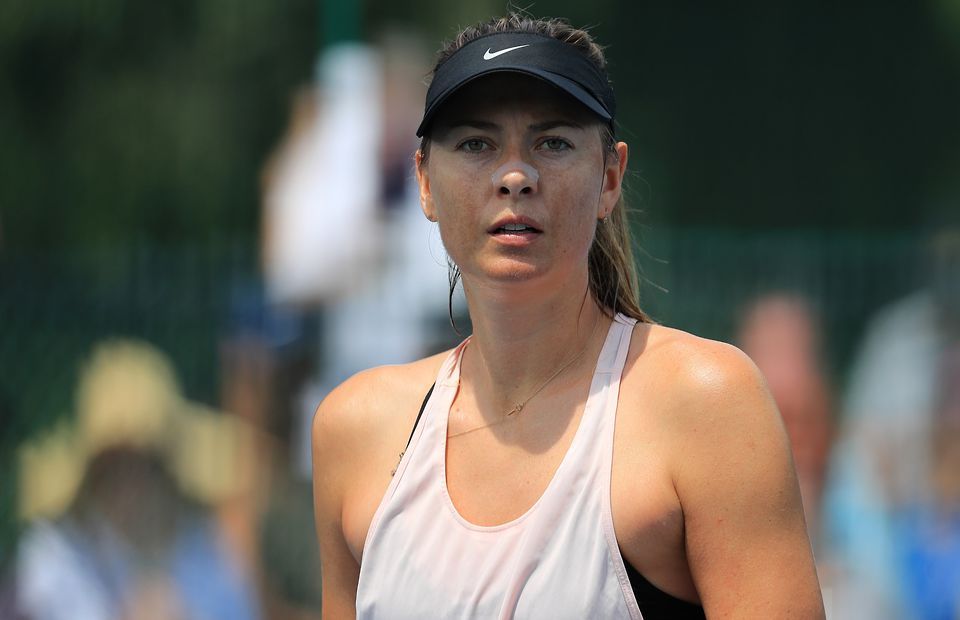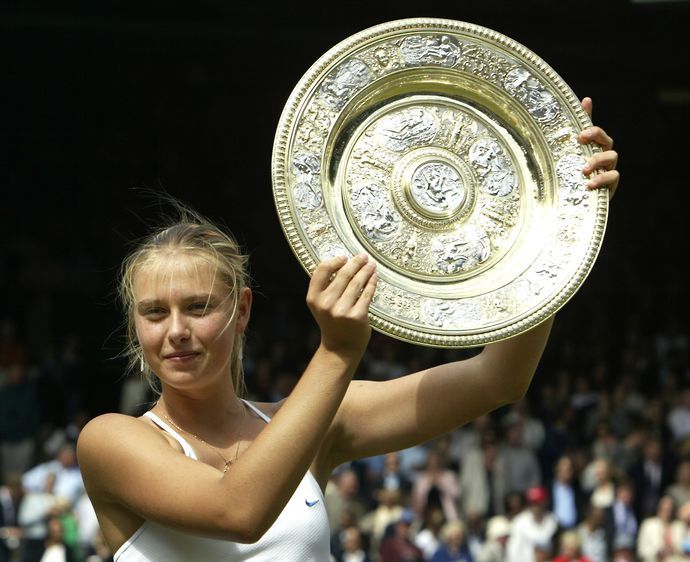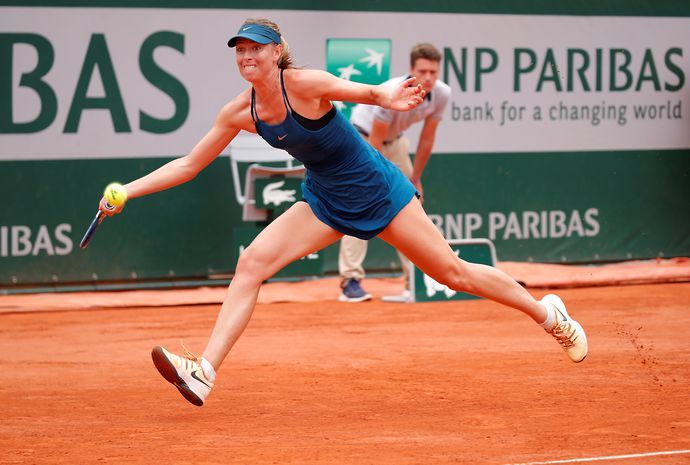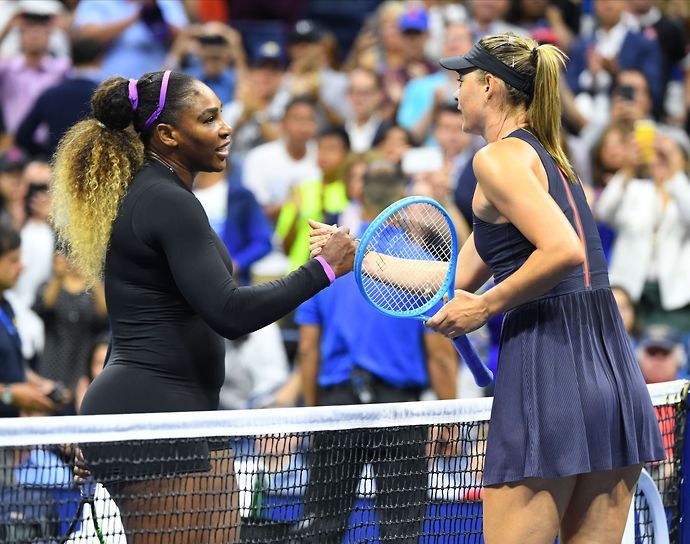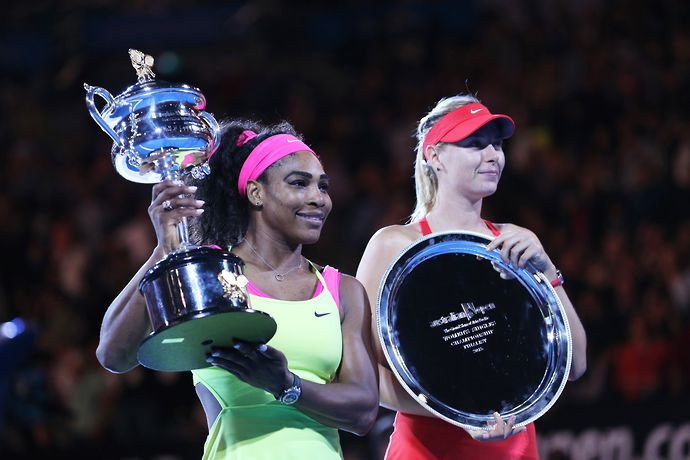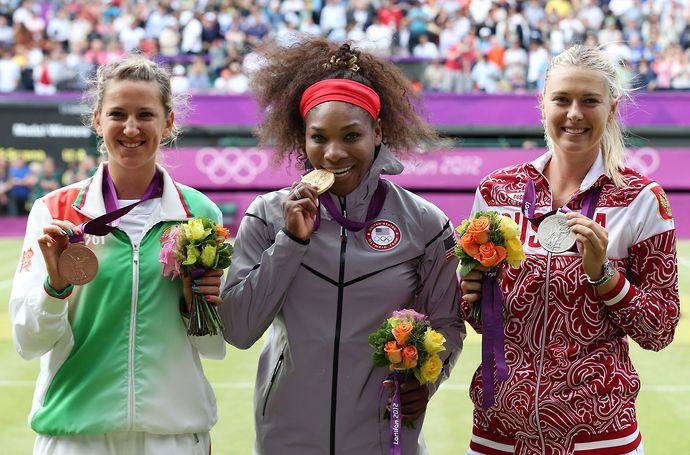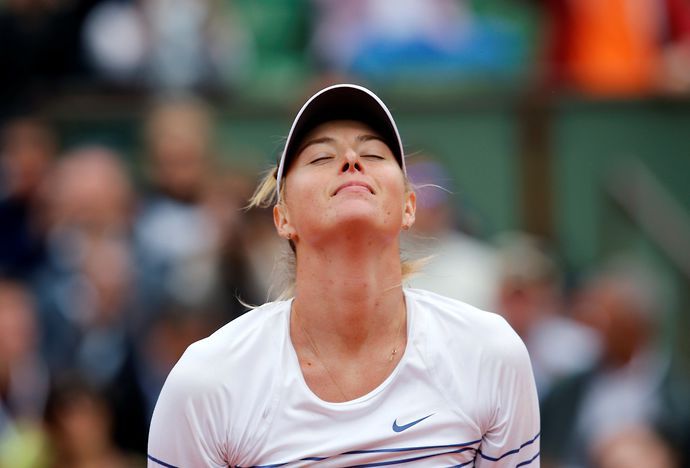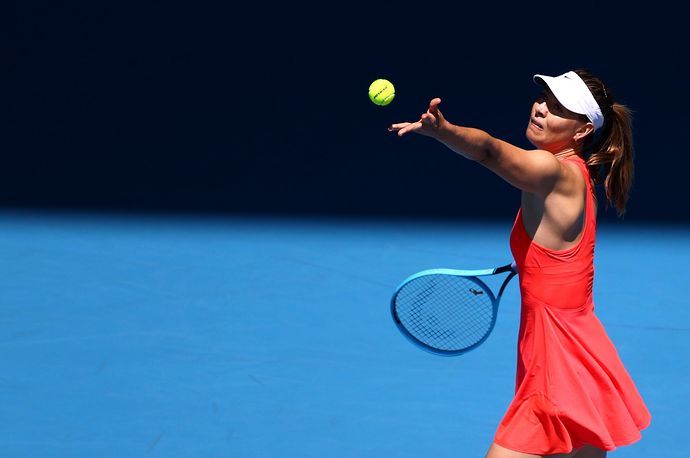Maria Sharapova is regarded as a great of women’s tennis. She ranks 11th among the most successful female players of the Open Era, winning five Grand Slams and ranking as the world number one for a total of 21 weeks.
As the Russian turns 34, GiveMeSport Women looks back at the defining moments of her career, including her famed feud with Serena Williams and the controversy surrounding her doping ban.
The rise of Sharapova
Born in the Russian town of Nyagan in Russia, Maria Sharapova first hit a tennis ball when she was four years old. Since then, she has gone on to win the greatest accolades of the sport, including a career Grand Slam.
There are very few players who have had as big of an impact on their sport as Sharapova has had on tennis. She broke onto the public’s radar because of her sporting achievements, but it was her blonde hair and good looks that made big brands line up with lucrative endorsement deals for tennis’s newest star, catapulting her to fame and Forbes’ ‘Rich List’.
Sharapova made her professional debut in 2002 on her 14th birthday. Within a year, she was in the top 50. Less than a year after that, she was a household name after lifting her first major trophy, defeating Serena Williams in straight sets at the 2004 Wimbledon final.
It seems like the Russian liked winning Grand Slams every other year. Wimbledon in 2004, the US Open in 2006 and then the Australian Open in 2008, before two French Open wins in 2012 and 2014.
At 21, Sharapova had three Grand Slam titles to her name after securing the Australian Open in 2008, but the pinnacle of her career came in 2012. She became the tenth woman to achieve a career Grand Slam by beating Sara Errani in the final of the French Open.
Yet, it was also a year that Sharapova fell short and Williams came up trumps once again, thrashing her in the Olympic final 6-0, 6-1 and ensuring it was a silver medal rather than a gold one around Sharapova’s neck.
Her final major victory arrived in 2014 – her second French Open title and fifth overall. By this point, a shoulder injury had become a regular source of frustration for the Russian and something which continued until she retired last year. She had relied on a hard-hitting style of play and a powerful first and second serve, but these strengths were diminished by the injury and consequent surgery.
Serena rivalry
Perhaps rivalry is too strong of a word when comparing Sharapova with Serena Williams. As the Russian retired last year, the scoreline finished 20-2 to Williams.
Looking at it from a statistical viewpoint, it would be a disservice to the American to argue it was even remotely close, but it was the clash of personalities on and off-court that captured the attention of tennis fans and those further afield.
Since Sharapova’s first Grand Slam win at Wimbledon in 2004, she and Williams have dominated the WTA tour for 15 years. No other player offered the same consistency over that time frame. Despite the head-to-head record tilting massively towards Williams, Sharapova was the next best thing in women’s tennis.
That Wimbledon final created a narrative that was to last for the remainder of Sharapova’s career, and to a lesser extent, Williams’s.
The 17-year-old Russian entered Centre Court and defeated the two-time reigning champion 6-1, 6-4. Williams already had six Grand Slam titles to her name, whilst for Sharapova, it was just her sixth appearance at a major tournament. It was one of tennis’s greatest upsets and Sharapova burst onto the international stage.
In her memoir, Sharapova recalls Williams bawling after the 2004 final and saying, “I will never lose to that little bitch again.”
Williams was wrong. She did lose to Sharapova again and she didn’t have to wait around for long. The Serena and Sharapova rivalry started in 2004, and by all means, it ended in 2004. The pair met again in the finals of that year’s WTA Tour Championships and Williams, for the second and last time, lost to Maria Sharapova.
When you consider that Williams won the next 20 matches, you have to wonder how the rivalry that never was remained relevant . Sharapova had established herself as one of the few to beat Williams and her five major titles showed she was, at the time, one of the game’s very best.
She might not have achieved the same athletic feats that Williams has, but the pair did match each other in one thing. Every dig that came from Serena was met with retaliation from Sharapova.
Williams was described by many as a fiery player, wearing her heart on her sleeve and often losing her rag on court. Sharapova was painted as the opposite. She was well known for her loud grunts on the court but she was portrayed as a calculated, cold as ice, character.
It seems fitting that the Sharapova vs Serena feud was put to rest by the better of the two. In Sharapova’s last Grand Slam final, Williams won in straight sets to record her sixth Australian Open title. Again, in Sharapova’s last appearance at the US Open, it was her greatest foe, Serena, that she faced and fell to in the first round.
Doping controversy
As her tennis success continued to decline, Sharapova’s credibility was overshadowed in 2016 after she admitted to failing a drugs test at the Australian Open. She was suspended for two years by the International Tennis Federation, a ban which was reduced to 15 months because she had been taking the drug for ten years without violating any anti-doping rules.
Meldonium, the drug in question, was added to the World Anti-Doping Agency (WADA) prohibited substance list just two months before that year’s Australian Open. This, along with the fact she was initially incredibly open about her consumption of the substance, split opinion across the tennis community.
Williams praised her for being upfront about her usage of the drug, but also condemned her along with the likes of Andy Murray and Rafael Nadal. The pair criticised the Russian for not taking notice of the new doping regulations, calling for her suspension.
And it wasn’t just players who took sides. Sharapova’s extreme marketability meant that some of the big brands which had raced to sponsor her jumped ship. Nike and TAG Heuer suspended their sponsorship and she was removed as a goodwill ambassador for the United Nations Development Programme. Yet racquet manufacturer HEAD carried on endorsing the Russian.
In 2017, she returned to the WTA tour and despite ranking outside of the top 100, those on the business side of tennis recognised the marketability opportunities that Maria Sharapova brought to the game. She was given wildcard entry to a number of tournaments, including the US Open. Whilst injuries to her thigh and arm hindered her progress, Sharapova had made her way back to the top 25.
But injuries continued to plague her and she ranked No.131 at the end of 2019. A defeat to Donna Vekić at the Australian Open in 2020 was the last match of Sharapova’s career as she announced her retirement from the game last February.
Undeniably, Maria Sharapova is one of the best players ever to have graced the courts. She accomplished a career Grand Slam and ranks among the greats, but her sporting success will always be overshadowed by two factors. One was in her control, the other was created by external forces.
The doping ban will remain a contentious issue in future discussions about Sharapova. There will always be questions about the genuinity of her excuse for taking a banned substance. She was open in confessing she had taken Meldonium for ten years, but her precious success is now undermined by the drug’s inclusion on WADA’s list of banned substances.
Secondly, Serena. How can you be celebrated for the highest of sporting achievements when there is an unstoppable force commanding the tennis landscape and obstructing your chances of success? Sharapova will, without exception, always be compared to the greatest player of all time.
















